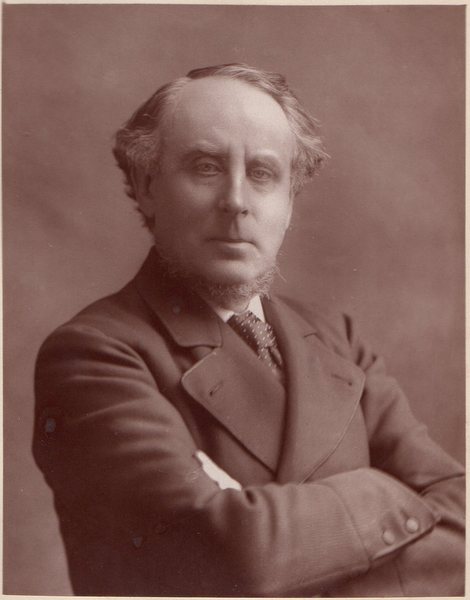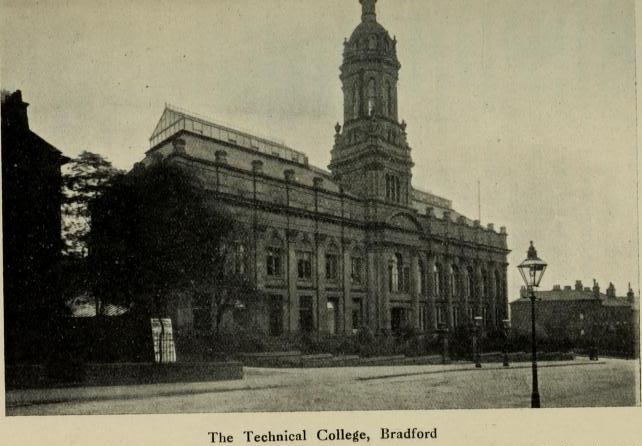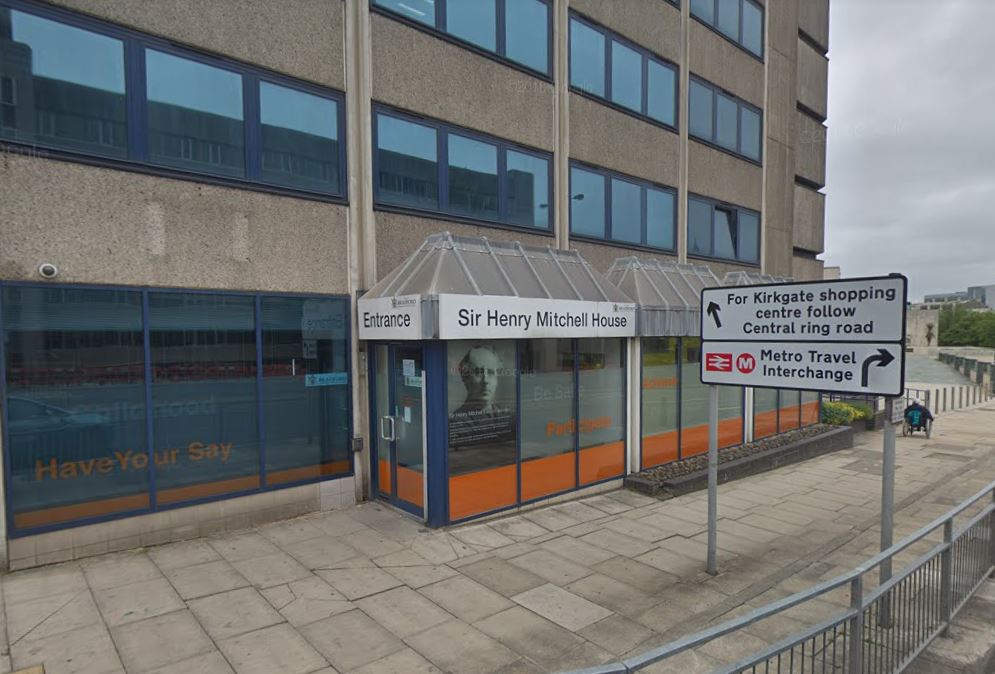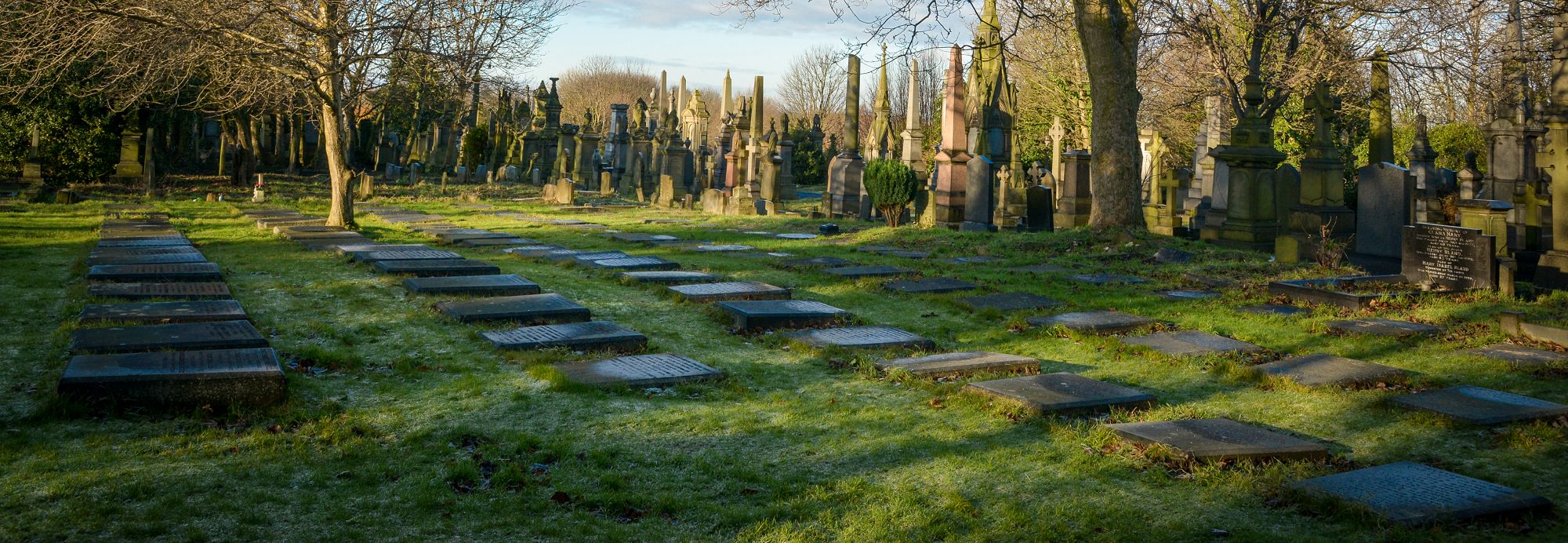Henry Mitchell
Sir Henry Mitchell (1824 – 27 April 1898) was a Bradford mill owner.

He was born in 1824 in Esholt, Bradford (bap. on 10 January 1836 in Rawcliffe-by-Goole, E. Yorkshire) to manufacturer Matthew Harper Mitchell and his wife Ellen. His education was at West House, Rawdon by Mr. Riley, gaining a first prize in maths and several other subjects. He started work at 14 years of age in his father’s mill where he was taught practically every branch of worsted manufacture. They resided at the Old Hall in the Village. He was the third generation in this business but before that the family were tenant farmers in Morton near Bingley.
In 1841 he joined William Fison and Co. Ltd., worsted spinners (See Appendix 1) (later Greenholme Mills of Burley in Wharfedale) at Sharp’s Shed, Manchester Road, Bradford. Fison & Co. was started by William Fison and the Right-Honourable W. E. Forster. The warehouse was on the site of the Midland Railway Station. Mr Mitchell became Principal Manager and frequently travelled from Bradford to Manchester to transact business, the journey taking 10 hours there and back. The company closed in 1968.
In 1848 he moved to A&S Henry and Co (See Appendix 2) as a buyer, becoming a partner in 1852, visiting America and becoming well known on both sides of the water as a most able and influential merchant. By that time he was a leading authority on the worsted trade and influential in Bradford politics.
He had married Anne (Annie) Gordon (b. 1822 in Gordon, Berwickshire, Scotland; bap. 16 November 1822) in 1851, the daughter of the Rev. David William Gordon b. 1798, bap. 15 April 1798 at Lauder, Berwick, Scotland [of Earlston, Berwickshire, Scotland] and his wife Janet (née Scott). They had three sons: Gordon, Henry and Andrew Samuel. Annie died in 1886 after suffering for many years with a serious mental affliction. Due to a health problem, Gordon established himself in business in Capetown, South Africa, dying of consumption at Cannes. Henry (Surgeon-Major Henry Mitchell) served in the Army for 13 years, the last 9 in the Guards. He retired from the Service in 1897.
In 1861 they lived at 9 Mornington Villas, Manningham; Henry, a Stuff Merchant was 36, Annie 38, Gordon 7 b. 1854, Henry jnr. 3 b. 1856 and Andrew Samuel 1 b. 1860. They had 2 servants: a Nurse Maid & a Cook.
In 1868 Mr Mitchell replaced Mr John Mitchell formerly an Alderman of the Borough as head of A&S Henry & Co. and went to Manchester, controlling sales of 600,000 pieces of cloth & stuff per year.
In 1870 he was elected to the Town Council for the South Ward.
In 1871 they lived at 172 Bolton Lodge, Manningham; Henry, a Stuff Merchant was 46, Henry jnr. 13 and Andrew 11 plus Henry’s sister Elizabeth Heaton 49 born 1822. [No servants] Both Annie and Gordon were not living with them, Elizabeth possibly brought in to cover for Annie (was she in an Asylum of some sort due to her serious mental affliction?) and Gordon was in Berry Brow, Almondbury, Huddersfield, a visitor and apprentice stuff merchant staying with the family of William Rowlston Haigh 53, a Woollen Merchant and his wife Ellen and daughter Janet McFarlan Haigh 22.
Mr Mitchell was a philanthropist and governor of the Bradford School Board and Grammar School and Vice President of the Bradford’s Mechanic Institute.

He was a Councillor, Alderman, Justice of the Peace and elected Mayor of Bradford in 1874. While holding office of Chief Magistrate of the Borough he oversaw the passing of the Waterworks & Improvement Act through Parliament and the opening of the new reservoir at Brownroyd in February 1875 when the Girl’s Grammar School was also opened and Lister’s monument inaugurated by him.
In 1876 he was appointed Government English judge for wool and silk fabrics at the Philadelphia Centennial Exhibition. In 1878 he was Vice-President of the Paris Exhibition of the Jurors selected to adjudicate on worsted fabrics. He then championed the necessity for technical education by supporting the New Technical School and was mainly instrumental in sending artisans representing the various trades of Bradford to The French Exhibition and reporting back on what they found. In 1878 Sir Henry was unanimously appointed President of the Council of the Mechanics Institute and then announced that a suitable site and building could be provided for about £25,000 of which he was one of the major subscribers. This allowed the Memorial Stone to be laid on the 16 June 1880 and the building to be opened by the Prince of Wales (afterwards King Edward VII) on the 23 June1882. Sir Henry presented gifts, estimated to be no less than £10,000, to the College in which he took the deepest interest until the close of his life.
In 1881 and now at 23 Parkfield Road, Bradford was Henry 56 an Ip Merchant, Elizabeth Heaton 59 plus Ellen Cranston Gordon 62 b. 1819 in Gordon, Scotland and the sister-in-law of Henry. Now they had 4 servants: a Domestic Cook, 2 Domestic Servants and a Groom Gardener.
In 1887 Sir Jacob Behrens stated that no words can describe the aid Sir Henry Mitchell has given to the plan to add commercial to technical education. Honours came thick and fast: a portrait of him was presented on 1 July 1890; Vice-President of the Bradford Conservative Association; being appointed to enquire into the depression of trade and industry and giving lengthy and valuable evidence to the Royal Commission on 28 January 1886; President of the Bradford Chamber of Commerce in various dates from 1878 to 1889; District Director for the Equitable Fire Insurance Co.
He founded Bradford Technical School, now part of Bradford College, which was opened by the future King Edward VII who was Prince of Wales at the time in 1882, who knighted him in 1887 for his services to technical education. The motto on Sir Henry’ crest was ‘Dante Deo reddam’ (in giving I shall give back to God’).

Also in 1882 he became an honorary member of the Cloth Worker’s Company of London, a position he highly valued.
At the end of 1889 the Firm of A&S Henry & Co. was converted to a Limited Company. When this was announced £1M was asked for; £8M to £9M was at once offered. Sir Henry then presented shares in the company to all the work people employed in the Bradford Workhouse.
In 1891 they were still living at 23 Parkfield Road, Manningham; Sir Henry 66 and a Merchant General, Elizabeth 69, no Ellen but instead Jane Mitchell 27 b. 1864 in Fulneck who was Henry’s niece. They still had 4 servants but different ones, a man & 3 ladies, all Domestic Servants.
In 1898 he was made the first Honorary Freeman of the City of Bradford, the honour coming to him as he lay on his death bed. During his lifetime it is estimated that he gave to the City more than £100,000 for various good causes.
On his death on 27 April 1898 aged 73 he was buried in Undercliffe Cemetery, Bradford, his coffin was of polished oak with phosphor-bronze furniture. His funeral was on 30 April 1898 where hundreds turned out despite the wet weather. Flags everywhere were hung Half Mast and the Town Hall bell was tolled. The service, a very impressive one, was conducted at St. John’s Wesleyan Church. 300 of A&S Henry & Co. alone attended. After the service the cortege of dignitaries not only of Bradford but from round the world was headed by 50 members of the Bradford City Police force and four mounted constables, moving through the Town Centre filled with great crowds and onward to Undercliffe Cemetery where a considerable crowd had gathered.
At the following meeting of the Chamber of Commerce the chairman stated that they deplored the loss of Bradford’s premier citizen.
He was religious, a prominent Wesleyan Methodist, being one of the first Circuit Stewards in 1871 of the Manningham Circuit. He took the deepest interest in St. John’s Wesleyan Church and school in Manningham, donating in total about £6,000 at various times plus £3,000 towards the building of a new Sunday School. A representative to the Wesleyan Conference and one of the General Treasurers of the Theological Fund. His wealth never spoilt him, constantly giving large sums for religious and philanthropic purposes; wherever a church, chapel or institution required help, the first words on everyone’s lips were ‘We will go to Sir Henry Mitchell’. Many poor families were his pensioners and men of every creed and social grade felt that in him they had a friend.
Sir Henry’s legacy remains to this day in the shape of the Sir Henry Mitchell House at 4 Manchester Road, Bradford which provides Children’s Social Care and is a leading Fostering Agency; the Bradford Council Fostering Service is also based there.

Appendix 1 – Worsted Spinners
Many spinners differentiate between worsted preparation and worsted spinning. Worsted preparation refers to the way the fibre is prepared before spinning, using ginning machines which force the fibre staples to lie parallel to each other. Once these fibres have been made into a top, they are then combed to remove the short fibres. The long fibres are combined in subsequent gilling machines to again make the fibres parallel. This produces overlapping untwisted strands called slivers. Worsted spinning refers to using a worsted technique, which produces a smooth yarn in which the fibres lie parallel.
Roving and wool top are often used to spin worsted yarn. Many hand spinners buy their fibre in roving or top form. The fibres in top and rovings all lie parallel to one another along the length, which makes top ideal for spinning worsted yarns.
Worsted-spun yarns, used to create worsted fabric, are spun from fibres that have been combed, to ensure that the fibres all run the same direction, butt-end (for wool, the end that was cut in shearing the sheep) to tip, and remain parallel. A short draw is used in spinning worsted fibres (as opposed to a long draw).
In short draw spinning, spun from combed roving, sliver or wool top, the spinners keep their hands very close to each other. The fibres are held fanned out in one hand while the other hand pulls a small number from the mass. The twist is kept between the second hand and the wheel—there is never any twist between the two hands.
Appendix 2
A & S Henry & Co: A & S Henry & Co Ltd was founded in 1805 in Manchester by Alexander Henry in partnership with his brother Samuel. Their Uncle, Alexander Henry (born 1766 of Scottish parents), had emigrated to America from Ireland in 1783, establishing himself as a merchant in Philadelphia. The younger Alexander Henry also emigrated from Ireland and joined in his uncle’s business but returned to England in 1804 rapidly establishing his company in marketing and distributing the products of the cotton industry from Manchester. The company expanded opening branch offices in Bradford, Belfast, Leeds, Huddersfield and Glasgow to act as collecting stations for textile products of all kinds. In 1858 an office was opened in Dundee at 51 St Andrews Street although all business continued to be carried out through Glasgow until c.1903. The company’s Dundee interests grew with the acquisition of premises and existing companies in the city and in 1953 A & S Henry & Co (Dundee) Ltd was incorporated as a separate company. In 1972 A & S Henry & Co was taken over by Great Universal Stores and in the same year A & S Henry & Co (Dundee) Ltd was taken over entirely by the Titaghur Jute Factory Co Ltd.
Use What3words to locate Henry Mitchell’s grave dining.mercy.plates
Research by David Broomfield

